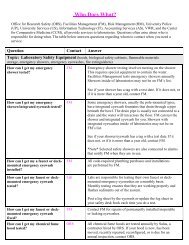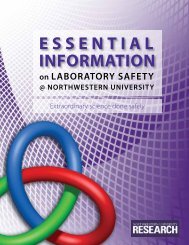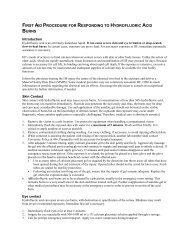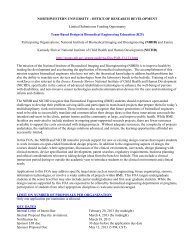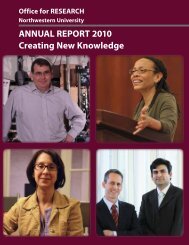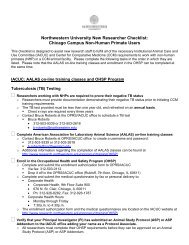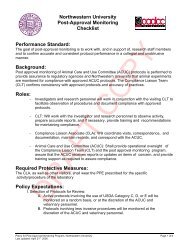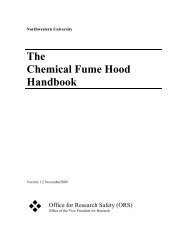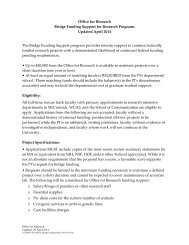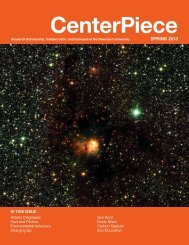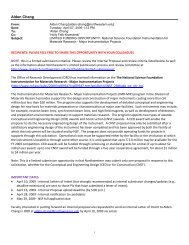annual report 2011 - Office for Research - Northwestern University
annual report 2011 - Office for Research - Northwestern University
annual report 2011 - Office for Research - Northwestern University
You also want an ePaper? Increase the reach of your titles
YUMPU automatically turns print PDFs into web optimized ePapers that Google loves.
Bryce Meredig<br />
McCormick School of Engineering<br />
and Applied Science<br />
Using Algorithms to Organize Materials<br />
As a computational materials scientist, Bryce Meredig, in<br />
the research group of Chris Wolverton, materials science<br />
and engineering, uses computer algorithms to study and<br />
predict the properties of many materials—from alloys to<br />
solar cells—much as a meteorologist <strong>for</strong>ecasts the weather.<br />
In this field today, ever-expanding computational capability<br />
is a double-edged sword. With access to<br />
faster computers, more potentially useful<br />
materials data can be generated than ever<br />
be<strong>for</strong>e. Un<strong>for</strong>tunately, finding meaning<br />
in those data becomes more difficult the<br />
more they accumulate. In other words, we<br />
are drowning in in<strong>for</strong>mation.<br />
Fortunately, computer scientists have<br />
already been grappling with the problem<br />
of data overload <strong>for</strong> some time. As people<br />
in other fields seek patterns in massive<br />
databases—the stock market, Twitter<br />
posts, and Google search terms, <strong>for</strong><br />
example—their innovations can benefit<br />
computational materials, as Meredig<br />
describes in the following example.<br />
Cubic zirconia, the faux-diamond<br />
gemstone, has a flawed reputation. Yet it<br />
46 Annual Report <strong>2011</strong> | Excellence in <strong>Research</strong><br />
Andrew Campbell<br />
turns out to be an enormously<br />
useful technological material<br />
with applications in automobile<br />
three-way catalysts, fuel<br />
cells, and thermal coatings.<br />
Interestingly, zirconia’s most<br />
valuable properties emerge<br />
when one adds other elements<br />
to it. The question is, what can<br />
we mix with zirconia, and what<br />
will happen when we do?<br />
This mystery is perfect <strong>for</strong><br />
a computational materials<br />
scientist to solve, says Meredig.<br />
By inserting much of the<br />
periodic table into zirconia in<br />
a “virtual experiment” on the<br />
computer, he can then examine<br />
the resulting data <strong>for</strong> trends.<br />
Data on so many di�erent<br />
elements, however, are nearly<br />
impossible to analyze by hand.<br />
Instead, he can leverage data-mining techniques and apply<br />
clustering algorithms to his results.<br />
Clustering methods attempt to group data into mutually like<br />
sets, or clusters. Meredig says that a beautiful thing happens<br />
when he clusters the zirconia data: the trends that emerge<br />
match our chemical intuition. The elements in the middle of<br />
the periodic table, or transition metals, are most similar to each<br />
other when in zirconia, while elements that surround them<br />
<strong>for</strong>m another group. Once he has his clusters, he can consider<br />
each separately and build sensible models <strong>for</strong> their behavior,<br />
something he considers a triumph in the face of data overload.<br />
The properties of elements added to the material zirconia follow our chemical intuition:<br />
the transition metals (the middle of the periodic table) belong to one similarly behaving<br />
cluster and other elements belong to a second cluster.




